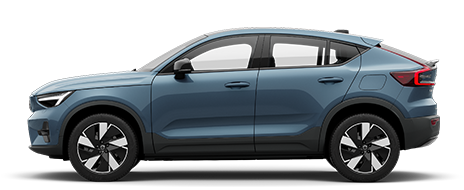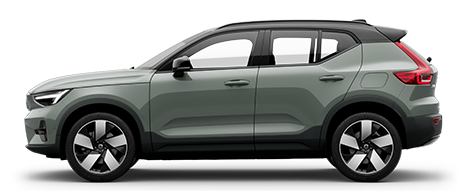Charging an electric car via a wall socket
Note
Charging cable (mode 2)
When charging via a wall socket, use a charging cable with a control unit than can limit the amperage (mode 2).
Note
Warning
Warning
Warning
- The charging cable has a built-in circuit breaker. Charging must only take place with grounded and approved sockets.
- Children should be supervised when in the vicinity of the charging cable when it is plugged in.
- High voltage in the charging cable. Contact with high voltage can cause death or serious personal injury.
- Do not use the charging cable if it is damaged in any way. A damaged or inoperative charging cable must only be repaired by a workshop - an authorised Volvo workshop is recommended.
- Always position the charging cable so that it will not be driven over, stepped on, tripped over or damaged in some other way, or cause personal injury.
- Disconnect the charger from the wall outlet before cleaning it.
- Never connect the charging cable to an extension cord or a multiple plug socket.
- Do not use one or more adapters between the charging cable and the electrical socket.
- Do not connect one or more adapters of any type between charging cable and car.
- Do not use an external timer between the charging cable and the electrical socket.
Also, refer to the manufacturer's instructions for using the charging cable and its components.
Important
Important
Starting charging
Plug the charging cable into a 230 V socket1.
Open the charging hatch.
Note
Important
Warning
- The electric car must only be charged at maximum permitted charging current or lower in accordance with applicable local and national recommendations for charging from wall sockets/plugs.
- The electric car must only be charged from approved grounded wall sockets.
- Avoid visibly worn, defective or damaged mains sockets since they may lead to fire damage and/or personal injury if used.
Important
Finish charging
End charging by pressing the button next to the car's charging input socket, or via the button in the centre display, and unplug the charging cable from the car's charging input socket and then from the 230 V socket1.
Note
Important
Charging must be ended before unplugging the charging cable from the car's charging input socket. If charging is not ended before the charging cable is disconnected, this may lead to damage to the charging cable or to the system.
Important
- Never unplug the charging cable from the wall socket while charging is in progress – there is then a risk of damaging the wall socket.
- Note that the charging cable must be unplugged from the car's charging input socket before being unplugged from the wall socket, partly to avoid damage to the system, and partly to avoid stopping the charging unintentionally.
Fuse
Charging an electric car via a wall socket corresponds to a high load on the fuse.
Important
Normally several 230 V consumers are included in a fuse circuit, so additional consumers (e.g. lighting, vacuum cleaner, electric drill, etc.) can be on the same fuse.
Important
Check that the 230 V socket has adequate power capacity for charging electric vehicles – in the event of uncertainty, the socket must be checked by a qualified professional. If the power capacity of the socket is unknown – set the lowest amperage in the centre display.
Example 1
If the car is connected to a wall socket (10 A) and the charging current is set at 16 A, then the car will attempt to draw 16 A from the mains power circuit – after a while the overloaded 10 A fuse for the socket will be tripped and battery charging stopped.
In which case, reset the fuse for the socket and select a lower charging current in the centre display.
Example 2
If the car is connected to a wall socket (10 A) and the charging current is set at 10 A, then the car will draw 10 A from the mains power circuit. If additional consumers are connected to the same socket (or another socket in the same fuse circuit) then there is a risk that the 10 A fuse for the socket/fuse socket will be overloaded and triggered, at which point battery charging is stopped.
In such cases, reset the fuse for the socket/fuse circuit and select a lower charging current in the centre display – or disconnect other consumers from the socket/fuse circuit.
Example 3
If the car is connected to a wall socket (10 A) and the charging current is set at 6 A, then the car will only draw 6 A from the mains power circuit. Battery charging will of course take longer, but then additional consumers can be connected at the same time to the same socket/fuse circuit as long as the total load does not exceed the capacity of the socket/fuse circuit.





